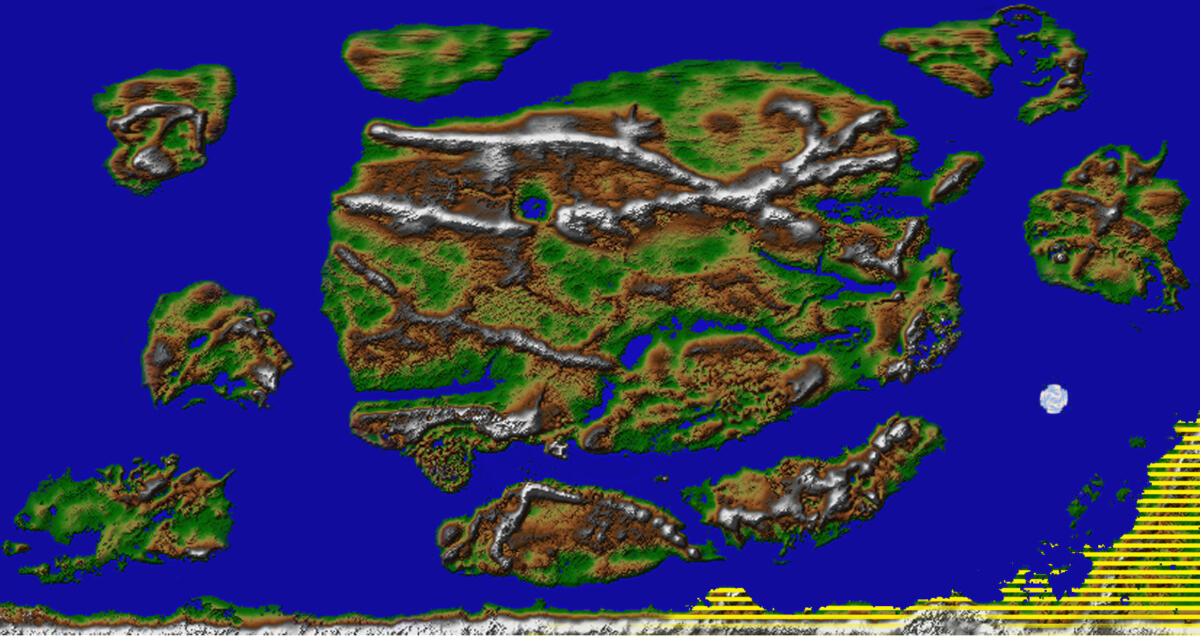Darim
Appearance:
Build:
From slim to muscular.
Height:
Females: 180-190
Males: 185-195
Weight:
Females: 60-90
Males: 75-95
Lifespan:
Females; 125-130
Males: 120-125
Skin:
Pale, dark golden, brown some are black.
Hair:
Mostly black, some brown.
Eyes:
Any
Language:
- REALMISH
- OL-DARIN
- RIM-DARIN
- SOUTH-DARIN
- WEST-DARIN
Culture:
- ARCTIC
- COASTAL
- GRASSLAND
- HIGHLANDER
- NOBILITY
- NOMAD
- SUBTERRANEAN
- URBAN
- WALDER
Legend
“They can blend in, but the observer will notice the large, broad noses, revealing their lineage.”
Description
In the vast tapestry of Races, the Darim emerge—a people whose lives are woven into the fabric of the land itself, a testament to the resilience and harmony that can be achieved through symbiosis with nature. With a stature that echoes the rugged terrain from which they hail, the Darim are a beacon of endurance, wisdom, and quiet strength.
Originating from the Archaic and Kobold, the Darim bear the marks of their harsh environment, their bodies sculpted by the unforgiving embrace of The Rim's cold tundras and glaciers. Their smallish build is a testament to the triumph of adaptation, as their forms mirror the landscapes that have nurtured their spirits for generations. In their realm, a painted portrait of unity, the Darim stand as a unique brushstroke, each individual a canvas upon which the story of their people is painted.
Nestled within the equatorial mountains, highland plains, and coastal enclaves of southern Darin, the Darim tread the land with reverence and care. A sparsely settled nomadic folk, they embark on seasonal migrations, following the rhythm of the land and the patterns of big game. Their existence, a testament to the harmony they share with nature, mirrors the ancient ways of the land’s first inhabitants.
In isolated communities, the Darim thrive, their lives a symphony of quiet contemplation and symbiotic relationship with the world around them. Their bonds with each other are as strong as the ties they share with nature, a testament to the unity that emerges when harmony is woven into the very essence of existence. Their hushed interactions and gentle gestures reflect the wisdom that comes from a life lived in sync with the world.
Generosity flows within the hearts of the Darim, a reflection of their deep connection to nature’s bounty. Their quiet demeanor is a testament to their reverence for the balance that governs the realm, a tribute to the lessons they’ve learned from their environment. Shy yet steadfast, they embody the resilience that can arise from a life of simplicity and harmony.
In a world where whispers of the past blend with the songs of the present, where the land’s heartbeat resounds in every gust of wind and every rustle of leaves, the Darim step forth—a testament to quiet strength, humility, and an unspoken bond with nature. With each step they take, the land seems to resonate, a reflection of their profound unity with the world around them, for they are the embodiment of endurance, wisdom, and a legacy etched in the very earth.
Skjald Ulrich
History
Considered the 11th oldest of the Indigenous tribes, they are the offspring of mixing Kobold and Archaic Cromi. They are a collection of people and are hardened greatly by the unfriendly climate of The Rim's cold tundras and glaciers stretching outwards.
Skjald El Mary
We know of three Darim vampires, unique characters whose impact of vampirism influenced Darim society. Here are some details about each vampire:
Olmok Pukdas, a 6th-generation vampire, is relatively powerful but still maintains a degree of connection to the original source of vampirism. Olmok, a prominent figure among the Darim, a wise elder, was embraced, and his abilities were enhanced by vampirism. Olmok’s motivations were centred around protecting the Darim people and ensuring their survival in the harsh environment of the Rim. But, with the embracement, it turned towards defending the vampiric community against external threats.
Johkum Polum, an 8th-generation vampire, is less powerful than Olmok but still possesses significant vampiric abilities. Johkum was a shaman leader among the Darim, using his vampiric powers to deepen his connection with the spirits and the natural world. Johkum’s motivations revolved around preserving the spiritual and cultural heritage of the Darim, but with room for vampires.
Kafte Grouefta, a 9th-generation vampire, is the youngest and least powerful of the three. Kafte was a tracker, using her vampiric abilities to enhance her skills in navigating the harsh terrain of the Rim and seeking out Ye'Til. Kafte’s motivations include proving herself within the Darim community and ensuring the safety of her people.
Each of these vampires’s enhanced physical abilities and unique powers complemented the Darim’s natural skills as trackers, hunters, and spiritual shamans. Their vampirism could be seen as both a blessing and a curse, providing strength and longevity but also creating internal and external conflicts.
Skjald Sejrik
Cartography

They are spread throughout the following Isles. and countries
The RimThey are located in the equatorial mountains, highland plains, and coastal areas of southern Darin and are only known outside Darin at the peninsula south of East Fjella and West Fjella. They are a sparsely settled nomadic folk that keep up with the seasonal migrations of big game.
Skjald Valgrif
Organisation
They live in isolated communities.
Skjald Vinotis
Special: They are generous, quiet, and shy for they live in a pact with nature and are seldom encountered by other races.
Skjald Ulrich
One should heed that the Urbanmen and Nobility differ quite from those in major hubs of The Realm. They generally don’t take political insults as lightly as those in the higher courts, but as their tribes are smaller and more personal, these hints are taken as offensive. So one needs to be far more careful with their words when dealing with a Darim chieftain or official.
Skjald Sejrik
Last Updated on 2024-05-20 by IoM-Christian
